Primary navigation
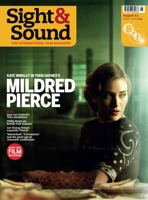
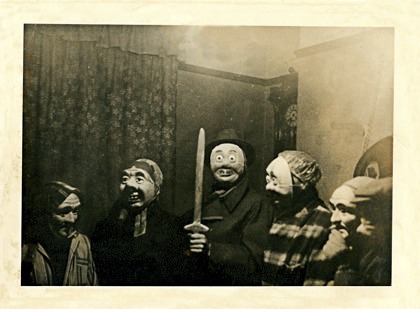
A new DVD collection of films documenting British folk culture evokes a vanishing world for Philip Hoare
Sir Thomas Beecham, the great music conductor, once declared that one should try anything once, except folk dancing and incest. Contrary to such antipathy, the term ‘folk’ has undergone a notable popular revival in recent years. From a word of vague abuse, conjuring up sandals and earnestness, it has been reinvented for an age which, in reaction to the commodified and easily available, revalues the artisanal and the obscure. This is evident in the success of numerous bands and in fashion – there’s even a London label that calls itself, baldly, Folk. Meanwhile, contemporary art has reappraised the term, from Simon Costin’s Museum of British Folklore and the work of Southampton artist Jonny Hannah, to Jeremy Deller, whose ambitious and evocative examination of ‘folk art’ seeks the analogue in the age of the digital, the mysterious and the traditional in the face of a world dedicated only to the new.
Thus the BFI’s release of a fascinating compendium of films about “folk customs and ancient rural games” is more than relevant – although Cecil Sharp, founder of the English Folk Dance Society in 1911, might counter that it was about time too. Sharp made his own Kinora spools – eerie, grainy recreations of folk dances – back in 1912, within sight of the century in which they had last flourished, even as the young men who were performing them so acrobatically in white shirts bleached by the sun were about to experience the Armageddon that gave every British village a stone cross inscribed with the dead.
Tradition, whether revived or even invented, suffuses this collection with a sense of the past seen through a telescope, compressed by the distance between our now and their then. In the title piece, Here’s a Health to the Barley Mow (1952), directed by the folklorist Peter Kennedy, we move along a Suffolk quayside that’s virtually unchanged since the 19th century or earlier, and into the Ship Inn, Blaxhall, near Woodbridge. Inside, the regulars are arrayed in equally undatable costume. We’re in the 1950s, but we might as well be at any point in time in the deep rural past. Fair Isle jumpers and cloth caps; tweed coats and stout boots; lace collars and round spectacles; neat print dresses and dark red lipstick. These are long-lost textures, and this is no chain pub. Everyone is smoking and drinking warm, dark beer; tobacco and yeast lie tangibly over the interior, as pewter pint pots are ranged over the bar. Full face to camera, the throaty singers perform unabashed, singing the round of “Good luck to the Barley Mow” with gusto, to the accompaniment of the accordion, the default instrument throughout these films, an insistent, ever-present whine made sad by its continual deflation.
There’s no cult of youth here. Toothless men sit alongside young women; the only entertainment is the human voice and wind through reeds. The singers do not so much sing as declare; they might as well be itinerant preachers as pub songsters. A pastoral dandy, with a white silk scarf around his neck and a watch chain dangling from his waistcoat, looks on as the village cobbler mimes his craft, banging the heel of one shoe on the other on his knee, singing “twine twiddle-oh twine” as he stitches with invisible thread. It’s a vaguely disturbing scene; one might be in a local asylum. Two men get up to step-dance face to face, their frenetic footwork weaving a pattern on the floor.
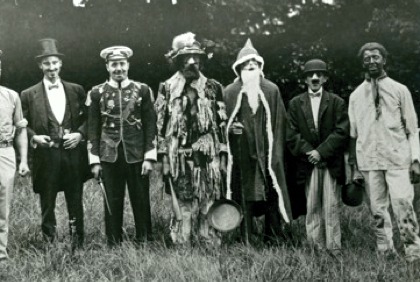
Mummers with Father Christmas
Throughout these films, one might inevitably ask: what are we being presented with here? What vision of the past – which was of course the present, then? Two decades after Kennedy’s film came Derby Tup (1974), directed by Ian Russell in Ridgeway, a Derbyshire village stranded between the past and the future, clinging to its rurality yet subject to the gravitational pull of Sheffield, the steel city. In a back kitchen, three wiry lads in their mid-teens are using soot from the stove to blacken their faces. One has a pillow stuffed down the dress he is wearing, in home-grown pantomimic travesty. They enter the local pub, along with a fourth member crouched on all fours and covered in a sheepskin with carved wooden horns.
What’s so remarkable about this scene, as the young men launch into their performance, is the disconnect between now and then – the very notion of teenage boys singing “fol-di-diddly-i-ay”. But they do it seriously, and well. The “Derby Tup” is the monstrous sheep they’re bringing to market – big enough to cover an acre – which is then ritually slaughtered with a bash on the head with a stick. “All the boys in Derby, came begging for his eyes / To kick around as footballs, for they were just the size.” The omnipresent sociological voiceover informs us that this ancient rite may reach back to the 7th century, when their predecessors performed “clad in the skin of animals”. Our modern shape-shifter, however, has flashing light bulbs for eyes.
The ‘Derby Tup’ is performed by boys aged 11 to 17, we’re told. It is a “kind of secret society outside of school or church”, self-organised, and there are “very good reasons for its survival”. The “positive benefits” include “status, excitement and, chiefly, money”. The mummers may collect £20 a night visiting pubs on Christmas or New Year’s Eve – “a significant sum” for such families. The performance “answers practical needs… enough to ensure its survival”.
Then we’re introduced to the latest recruits. The new young gang are wearing penny-round Ben Sherman collars and baggy trousers, their hair is long and feather-cut, and the performance is slightly less convincing, perhaps because of encroaching pop culture. Will the ‘Derby Tup’ still endure in the age of punk to come, and all that is to follow? For all the post-war backwash, one can almost hear the first synthesiser notes of The Human League in the background; these scenes may well have been the last of their kind. As folklore expert Steve Roud, an advisor to this collection, notes drily of another sequence: “Today, it is increasingly difficult to find teenagers who wish to be dressed as queens and ladies-in-waiting, and to be crowned ‘Queen of the May’.”
Alan Lomax’s Oss Oss Wee Oss (1953) is probably the most lively of all these films, although not without its inconsistencies. There’s an immense and not unknowing charm to the piece, bursting with sound and colour, as if uncontained by the mere medium alone. Charlie Chilton, our central-casting Cockney narrator, apparently down for the day from Stepney, takes us to the Cornish village of Padstow, a place whose fame has long since been subsumed by Mr Stein and his fish and chips. This “sunny little fishing port… famous for wrecks and ships gone wrong” is already remaindered. “Today the fishing fleet stays at home.” A local sailor is seated on the quayside, the inevitable accordion in his arms. “What’s all this about?” asks our cheery Cockney – then proceeds to answer his own question. “Some say it’s two thousand, three thousand, four thousand years old… a sexy, savage springtime rite.” (In fact, Steve Roud observes in his notes to the collection, “It is now generally agreed that the mummers’ play custom only dates from the mid or late eighteenth century, although the tradition of performing short plays at Christmas is older.”)
The excitement builds in the pub the night before. In a scene that recalls nothing so much as a Northern Soul nightclub, two young men with floppy hair but short back and sides dance around each other, throwing shapes of arms and legs within each other’s airspace before falling to the floor to spin. They look like mating birds, but they’re practising for the forthcoming festivities. “Summer is a-coming,” sing the carousers outside the pub in the dark, announcing the impending May Day morning.
Then out comes the hobby-horse, to the children’s chants of “Oss Oss, Wee Oss!” It’s a fantastic scene. Like all such figures, part man, part animal, the horse itself is surrounded by a kind of hooped tarpaulin skirt – our Cockney tells us it was once covered in tar, and any young woman whom the horse kissed and thus stained would be married within a year. Out of nearby woods, men and boys emerge bearing sycamore branches to be tied to telegraph poles as temporary bowers. Other garlands are made from cowslip, bluebell and primrose, “thanks to the squire”. The hierarchy remains in place – but it is about to be overcome by a day of anarchy. (We’re told that “influential people” had attempted to suppress the hobby-horse, without success.)
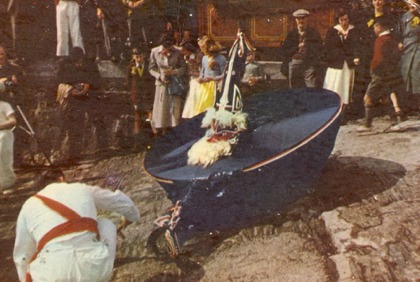
The Padstow hobby-horse
Suddenly the streets are filled with characters out of a picture by Edward Burra or John Minton. Sailors in white caps, others in spotted handkerchiefs and flowers; everything is red, blue and white; the spirit of the Festival of Britain presides over the film. (Peter Kennedy, who produced Oss Oss Wee Oss, admitted that the people of Padstow dressed up for the occasion for the first time, and wore the same costumes for two years afterwards – thus the film itself engendered its own tradition.) Amidst this bacchanalia, the hobby-horse is killed, like the Derby Tup, only to rise again, a resurrection heralding “the springtime soil, that brings the crops out of the ground”. But as William Fowler, co-curator of this collection, notes: “There are questions to be asked here about whom the film was made for, and why it had to be made if – as we see here – the custom is maintained so voraciously. Was it intended as a document of survival? These questions, difficult to answer, inevitably lead us back to the issues of paternalism.”
There’s a sense of the reclamation of English culture, a notional security in an unchanged past. There are no politics, at least on the surface. This is a monocultural world, for all that the Empire Windrush might be disembarking in the Port of London; there are no foreign faces, only those to which soot has been applied. This is not so much nostalgia as something out of reach, an evocation of the outdoors, the amateur and the unorganised and unofficial – a rejection of the prevailing order yet an acceptance of it too. Yet as Fowler intimates, we must ask how much of this is real? How far is it stage-managed? In a postmodern context, each one of these films could be an elaborate set-up, a Jeremy Deller recreation. (Indeed, Deller’s own films documenting folk customs, Shrovetide Football, Ashbourne, 2000, and Hare Pie and Bottle Kicking, Hallaton, 2005, are included in this set.)
The flag of St George flies unironically over these scenes. Walk in St George (1952) is bright in saturated yet faded colour, with a cast including Saints George and Patrick, and Father Christmas. Its colour refutes a world battered by war, even as it re-enacts an ancient struggle. As they process down the village lane – Symondsbury in Dorset, deep in Thomas Hardy’s Wessex – the mummers appear to be walking out of the past and into the future, in a manner that evokes, for me at least, the work of Nicolas Roeg (who was DP on 1967’s Far from the Madding Crowd, filmed in the same county and itself including ‘authentic’ folk songs).
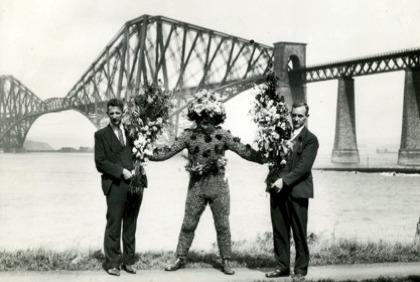
South Ferry’s Burry Man and the Forth Bridge
The costumes are extraordinary: men with beribboned heads, like a kind of English commedia dell’arte troupe or something out of a Polynesian tribal rite, both eerie and anachronistic – for all the handsome smiles on the faces underneath in the final revelation scene. (Their transformation is mirrored by the collection’s other outstanding scene of otherness: the Burry Man of South Queensferry, covered head to toe in sticky burrs and paraded around the Scottish village – part Green Man, part Wicker Man, part surrealist installation – in Doc Rowe’s 2002 film.) Beaming at the camera, these young men are not shell-shocked like their brothers or fathers or grandfathers – a shadow represented by the Hardyesque characters supping their beer behind them. (One might recall here that Hardy himself, who lived through World War I, oversaw a number of silent film adaptations of his novels from 1913 onwards.) Their young faces are unscarred by war; like the Padstow hobby-horse, they are signs of resurrection.
Alan Simpson’s Wake Up and Dance (1950), made for the English Folk Dance and Song Society, is a more extravagant set piece filmed in Stratford-upon-Avon. It too seems a bold rearguard action, as men and women are summoned from the suburbs and washing lines to dance in the fields as a kind of 1950s flash mob. There’s a joy to these scenes, for all that they might be compared to another, darker kind of monoculture enacted only a few years earlier in Germany, Italy and Spain. They’re caught in a time loop in which nothing changes, a sense of stasis even as they whirl around, changing partners clad in clothes from a pre-acrylic world. There’s a Betjemanesque longing here, albeit without the irony; a Shell Guide view of England via Michael Powell and Emeric Pressburger.
Indeed, like Powell and Pressburger’s work, many of these mid-century films reflect a peculiarly British art movement, identified in the 1930s as ‘Neo-Romantic’ and celebrated by curator David Mellor in his 1987 Barbican Art Gallery exhibition A Paradise Lost. Then Dr Mellor noted that the movement had been “edited out of the history of British art and culture”. The same might be said of these films. They do not record revolution or political shifts – they are memorials to the reverse. In fact, what is striking about viewing them now, from the perspective of the 21st century, is their sense of consensus. They propose – or commemorate – an agreed world, with all in common. They draw on a pre- as opposed to post-imperial world. And whether or not these rituals were invented two hundred or two thousand years ago, a pre-Christian, pagan DNA runs through them too.
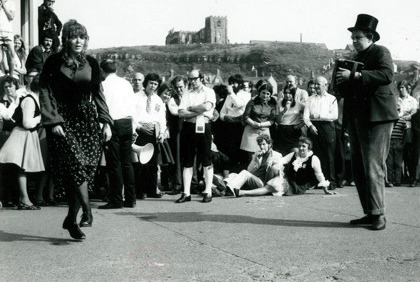
Clog Dancing in Whitby
Yet more deeply and, in its own way, more darkly evocative is Leslie Daiken’s One Potato, Two Potato, “made on a shoestring budget thanks to a £551 grant awarded by the BFI Experimental Film Fund”, as Christophe Dupin notes. This beautiful film depicts children’s games and songs in a post-war world – the same rituals of the playground that I myself recall from suburban Southampton in the 1960s. Girls did indeed spend all their spare time skipping – tantalising, rhythmic, expressive. The children here seem physically different: pale, sinewy, reared on austerity diets, singing obscure rhymes that were the argot of break time: “one, two, three, O’Leary”, “hick, hack, first crack, conqueror of eleven”, “plawsy, clapsy, turns the wheels to backsy”.
Photographed by Peter Kennedy in Camden Town in 1957, One Potato, Two Potato plays out on bomb sites reminiscent of Bill Brandt’s early photographs, in streets largely empty of cars, and in gutters where boys in grey shorts (I wore the same) float paper boats, to a soundtrack of received songs: ‘The Big Ship Sails on the Alley-Alley-o’, ‘Oranges and Lemons’ and the positively mournful ‘Poor Jenny Is A-Weeping’. Like others in the compilation, this film strays into liminal territory, a lyrical darkness incarnate out of an imagination filled with strange and sometimes threateningly innocent images. “As I went out to buy some eggs/ Who did I meet but bandy legs?”
Bonfire Night is followed by the song ‘London’s Burning’, over blasted streets that had recently yielded their own charred bodies. “He who fights and runs away/ Lives to fight another day.” Boys act out their own battles in Lord of the Flies scenes, singing “I’m the king of the castle” on heaps of rubble. It’s a sensibility evident on the other side of the country, in John Bartlett’s Children of the Moor (1975) where, a generation later, Devon children re-enact May Day and mummers’ plays in a manner that’s both ancient and playful, with a sense of something sliding out of reach even as the cameras roll.
Writing about the film, Daiken said he wanted to “communicate this powerful force in childhood… something of a Mystery when looked at in wonderment by adults who have grown away from the innocence, the compulsion and the ritualism of the young”. So, too, do we look on all these scenes – suffused with nostalgia and illusion, with suppression and expression – and wonder if we ever inhabited the same world.
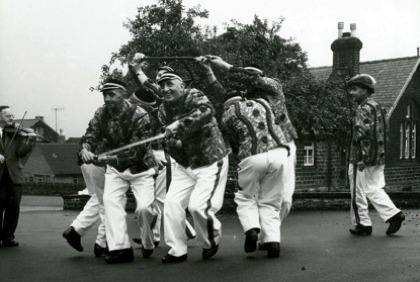
Sword dancers in Grenoside, 1965
Philip Hoare’s books include ‘England’s Lost Eden: Adventures in a Victorian Utopia’ and ‘Leviathan’. The two-DVD collection ‘Here’s a Health to the Barley Mow: A Century of Folk Customs and Ancient Rural Games’ is released by the BFI on 18 July. Folk-singing legend Shirley Collins remembers the pioneering field work of Alan Lomax and Peter Kennedy in the August 2011 issue of Sight & Sound
This is our land: Frances Morgan on films about liminal Britain at the London Short Film Festival (January 2011)
English pastoral: Mark Fisher on Patrick Keiller’s Robinson in Ruins (November 2010)
Britain’s secret Brazilian: Nick James on Alberto Cavalcanti’s profound influence on British film-making in the 1930s and 40s (August 2010)
Grey area: Mark Fisher is mesmerised by Chris Petit’s Content (March 2010)
Family photos: Sukhdev Sandhu revels in John Akomfrah’s Mnemosyne (February 2010)
Seeing red: Ian Christie on the restoration of The Red Shoes (August 2009)
New boots and rants: Jon Savage on Shane Meadows’ This is England (May 2007)
Looking at the rubber duck: Nicolas Roeg talks to Richard Combs about working with François Truffaut on Fahrenheit 451 (Winter 1984/85)
Man of Aran reviewed by Paul Rotha (Summer 1934)